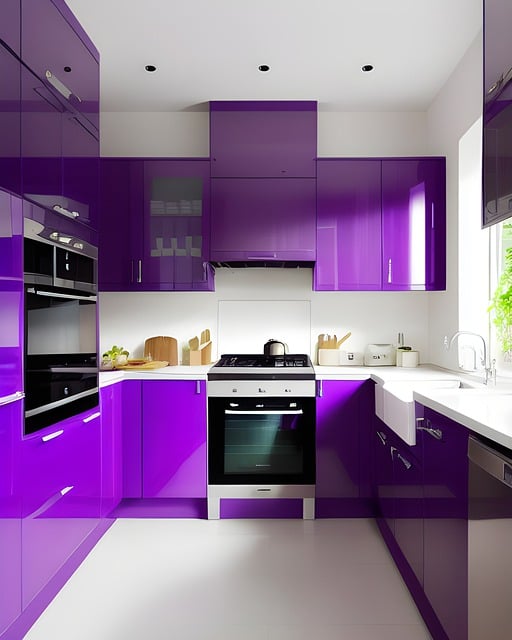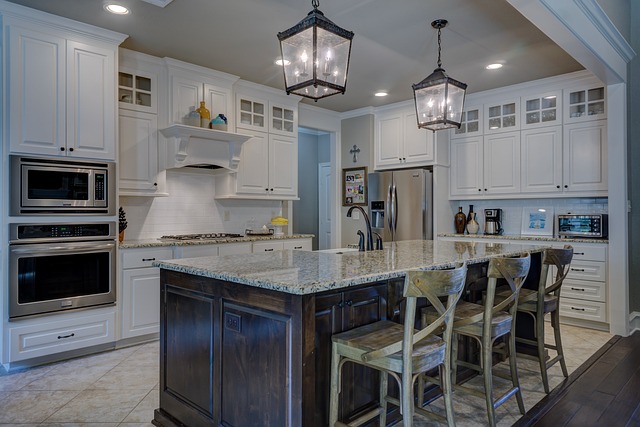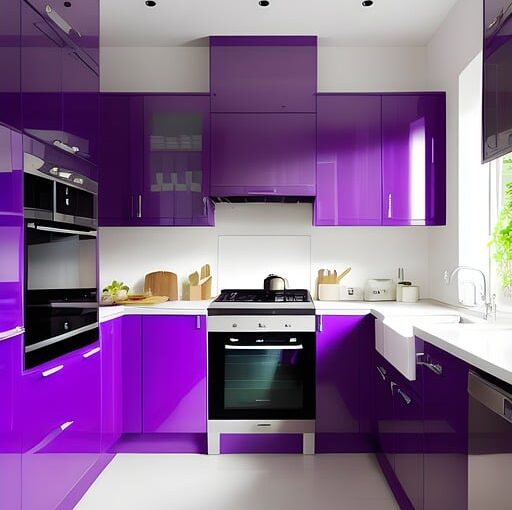First off, you’ll want to go for screws that are specifically designed for wood. Wood screws are your best bet because they have a sharp tip that helps them bite into the wood without splitting it. Think of them as the trusty sidekick in your kitchen renovation adventure. A good choice here is #8 or #10 screws, which are sturdy enough to hold the weight of your cabinets without breaking a sweat.
Now, let’s talk about length. You’ll typically want screws that are at least 2.5 to 3 inches long. This length allows them to penetrate deep into the wall studs, providing a solid anchor for your cabinets. Imagine trying to hang a heavy coat on a flimsy hook—it just won’t work! You need that solid grip to ensure your cabinets stay put.

Don’t forget about the material! Stainless steel screws are fantastic because they resist rust and corrosion, especially in a kitchen where moisture can be a sneaky little troublemaker. If you’re feeling fancy, you might even consider using coated screws, which offer extra protection and a sleek look.
Lastly, always remember to pre-drill your holes. It’s like warming up before a workout—essential for preventing splits and ensuring a smooth installation. So, grab your drill, pick those screws, and get ready to transform your kitchen into a culinary paradise!
Nailing It: The Ultimate Guide to Choosing the Right Screws for Your Kitchen Cabinets
First off, consider the material of your cabinets. Are they made of solid wood, particleboard, or maybe MDF? Each material has its quirks, and the screws need to match. For instance, if you’re working with solid wood, you’ll want to use wood screws that can grip tightly without splitting the wood. On the flip side, if you’re dealing with particleboard, opt for screws designed specifically for that material to ensure a secure hold.
Next, think about the length of the screw. It’s like choosing the right length for your favorite pair of jeans—too short, and they won’t hold; too long, and they might poke through the other side. A good rule of thumb is to use screws that are at least 1.5 times the thickness of the material you’re fastening. This way, you’ll get a solid connection without any unsightly protrusions.
Don’t forget about the screw head! Flat heads are great for a flush finish, while pan heads can provide a bit more grip. And if you’re feeling fancy, consider using screws with a coating to prevent rust, especially in a kitchen where moisture can be a sneaky intruder.
So, whether you’re a DIY enthusiast or just trying to spruce up your kitchen, remember that the right screws are your unsung heroes. They’re the tiny but mighty components that hold everything together, ensuring your cabinets stand the test of time.
Screw It Right: Expert Tips for Hanging Kitchen Cabinets Like a Pro
First off, preparation is key. Before you even think about reaching for that drill, take a moment to measure your space. You wouldn’t want to end up with cabinets that are too high or too low, right? Use a level to mark where the bottom of your cabinets will sit. This little step can save you a world of headaches later on.
Next, let’s talk about the studs. No, not the kind you see in movies! We’re talking about the wooden beams behind your walls. These are your best friends when it comes to hanging cabinets. Use a stud finder to locate them, and make sure to anchor your cabinets into these sturdy supports. Think of it like building a house of cards; without a solid base, everything comes crashing down.
Now, when it comes to actually screwing in those cabinets, don’t rush it. Take your time to align everything perfectly. It’s like threading a needle—patience is your best ally. And remember, a power drill is your best buddy here, but don’t go full throttle right away. Start slow to avoid stripping the screws.
Lastly, don’t forget to check for levelness after you’ve secured everything. A slight tilt can make your beautiful cabinets look wonky, and nobody wants that! So, grab that level one more time and make any necessary adjustments. With these tips in your toolkit, you’ll be hanging kitchen cabinets with confidence and flair!
The Hidden Heroes: Why Choosing the Right Screws is Crucial for Kitchen Cabinet Stability
Imagine your cabinets as a beautiful painting hanging on the wall. What keeps that painting from tumbling down? The right hooks and nails, of course! Similarly, screws are the backbone of your cabinetry. They ensure that your cabinets can withstand the daily hustle and bustle of kitchen life—think heavy pots, clattering dishes, and the occasional enthusiastic cooking session. If you skimp on screw quality, you might as well be building a sandcastle at high tide.
Now, let’s talk about types. Not all screws are created equal! Wood screws, for instance, are designed to grip wood tightly, while drywall screws are better suited for, well, drywall. Using the wrong type can lead to loose cabinets that wobble and creak, making you feel like you’re living in a haunted house. And let’s be honest, nobody wants that!
Also, consider the length and thickness of the screws. Too short, and they won’t hold; too long, and they might poke through the other side. It’s a delicate balance, much like finding the right amount of seasoning in your favorite dish.
So, the next time you’re planning a kitchen remodel or simply tightening up those cabinets, remember: the right screws are the hidden heroes of your kitchen. They’re the tiny warriors that ensure your cabinets stand strong, ready to support your culinary adventures!
From Wood to Metal: Decoding the Best Screws for Your Kitchen Cabinet Installation
Let’s break it down. If you’re working with wood cabinets, wood screws are your best bet. They’re designed to grip the fibers of the wood, providing a strong hold. Imagine them as the glue that keeps your cabinets standing tall. On the flip side, if you’re dealing with metal cabinets, you’ll want to opt for self-tapping screws. These little wonders drill their own hole, making installation a breeze. It’s like having a personal assistant who knows exactly what to do!

Now, you might be thinking about the length of the screws. It’s crucial! Too short, and they won’t hold; too long, and you risk splitting the wood or poking through the other side. A good rule of thumb is to choose screws that are at least one and a half times the thickness of the material you’re fastening. It’s like picking the right size of shoes—too tight, and you’re in for a world of discomfort.
Frequently Asked Questions
What Size Screws Are Best for Hanging Kitchen Cabinets?
For hanging kitchen cabinets, 2.5 to 3-inch screws are typically recommended. These screws provide the necessary strength to support the weight of the cabinets while ensuring a secure attachment to the wall studs. It’s important to use screws that are suitable for the material of the cabinets and the wall to ensure stability and durability.
What Type of Screw Head is Ideal for Kitchen Cabinets?
For kitchen cabinets, a screw head with a flat or pan design is ideal as it provides a flush finish and prevents snagging. Additionally, a Phillips or square drive head offers better grip and reduces the risk of stripping during installation. Choose stainless steel or coated screws for durability and resistance to moisture.
How Long Should Screws Be for Kitchen Cabinet Installation?
The length of screws for kitchen cabinet installation typically ranges from 1.25 to 2.5 inches, depending on the cabinet material and the type of mounting. For standard cabinets, 1.5-inch screws are commonly used to secure the cabinet to the wall, while longer screws may be needed for thicker materials or additional support. Always ensure the screws penetrate the wall studs for maximum stability.
Should I Use Wood Screws or Drywall Screws for Cabinets?
When choosing screws for cabinets, wood screws are generally preferred for their strength and ability to hold securely in wooden materials. Drywall screws, while suitable for attaching drywall, are not designed for heavy loads and can break or strip in wood. For optimal durability and support, use wood screws for cabinet assembly.
Do I Need Special Screws for Heavy Kitchen Cabinets?
When installing heavy kitchen cabinets, it’s essential to use screws that are specifically designed for the weight and material of the cabinets. Standard screws may not provide the necessary support, leading to potential failure. Opt for heavy-duty screws or lag bolts that can securely anchor the cabinets to the wall studs, ensuring stability and safety.
